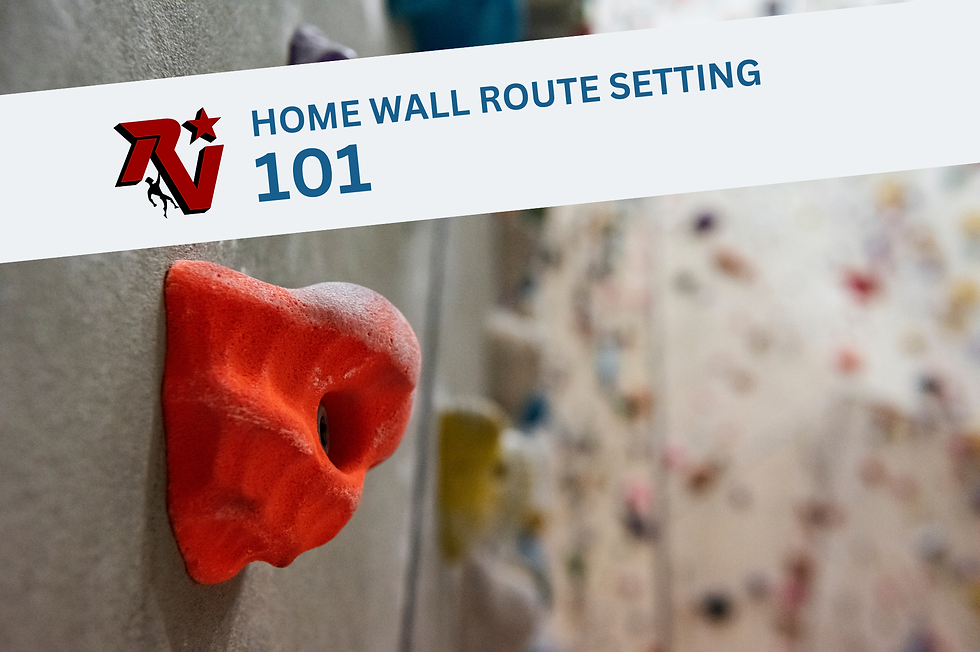Welcome to Winter Training: How to Make the Most of the Off-Season
- Dovi Hirsch
- Jan 4, 2023
- 3 min read
by Christopher Schafenacker

Every die-hard climber knows there’s no real off-season in climbing. When conditions are good, you’re trying to send your projects; when they’re not, you’re training to be able to do so. Winter for most North Americans is all about the later. A few nutbar friends might still be freezing their tips off trying to boulder outdoors but the sane among us will take this time to ensure we’re in top shape for spring. Here’s how you do that.
A Periodized Approach to Winter Training
What’s it that they say about planning? Fail to plan, plan to fail… you know the line… and you probably also know that it speaks the truth.
There’s nothing wrong with spending the winter having a merry ol’ time sessioning with friends but this won’t get you results. Yes, new climbers benefit from simply logging miles but those with more experience need to structure their training if they want to see continued improvement. There are a lot of competing opinions about how best to do this but all involve some variation on cycling through periods of hypertrophy, maximum strength, and power training. Here’s one approach:
1. Hypertrophy Training (6-8 Weeks)
Hypertrophy is the process by which your muscles get bigger. Climbers often shy away from anything that might make them heavier but this is a mistake. Big pipes may weigh more but they also mean more sarcomeres in parallel which means greater force production potential. The bigger your muscles, the more strength they are capable of generating. As long as you focus on developing climbing muscles (and not, say, an Instagram-worthy booty), the extra strength will more than compensate for the extra weight.
There are two keys to training hypertrophy: 1) high training volume and 2) high levels of effort. Sets should be composed of 5 to 20 reps completed at near max effort and you should aim for a minimum of 10 sets per week.
2. Maximum Strength Training (4 Weeks)
Once you’ve increased your strength production potential, it’s time to turn this into functional strength. Max. strength training is best gained by working at above 60% of your one-rep. max (1RM). High loads, low reps, and multiple sets characterize this type of training.
Aim to complete 2 to 3 weekly sessions for targeted muscles groups and 1-2 sessions for muscles you’re simply trying to maintain. Increase load by 2 to 10% every third workout (as long as you’re meeting your repetition goals).
3. Power Training
Power is a measure of how quickly you can generate strength. You can’t have high power without high strength which is why this training block comes last. Now that you’re strong, it’s time to get fast. In climbing, this means practicing dynamic, climbing-specific movement or, in other words, actual climbing. Yes, this is the period that’s all about sessioning. Quality beats quantity, however. You need to be trying hard problems that challenge you both physically and technically and you need to stop when the quality of your climbing drops. Climbing yourself into the dirt just means you need to rest more between sessions and this is inefficient.
Among the best tools out there for training power is a good, old-fashioned spray wall. If your gym doesn’t have one, you can build one yourself with a simple home woody and a healthy dose of motivation.
Featured Climbing Training Gear
Maverick: The on-the-go, bring it anywhere hangboard. On a family road trip to keep your fingers in shape. We like to bring this to the crag with us to keep our fingers warm—without losing skin on mediocre warm-ups—at that steep, thuggy sport crag.
The Rocket Wall: Available in 6’ and 8’ widths, it’s been tough for us to keep up with the demand for this innovative home climbing wall solution. Slightly overhanging, the Rocket Wall is big enough to set routes on, or to build a systems board.
The Rock-Stah: Our handcrafted version of a traditional hangboard, with curving crimp rails to help alleviate unnecessary strain on your pulleys. Because ain’t no one got time for a finger injury…
The Rocketeer Wall: our free-standing adjustable solution for those who can’t mount a hangboard anywhere in their home or apartment—or who are limited on space. The Rocketeer gives climbers the additional option to set specific climbing holds. Recreate the crux holds of your proj and get ready to send, bruh.











Comments